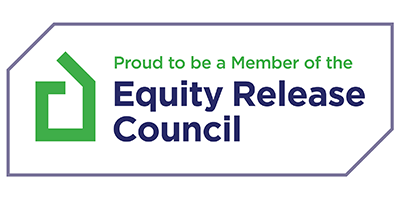In this article
Anyone that already owns a property, whether it is a family home or a buy to let, will see it as an investment. It’s more than just putting a roof over your head, it’s the largest asset you will own, something you can perhaps later sell or pass through the generations.
The property market is always fluctuating, ever-changing and there will be times when you see property prices soar.
During peaks like this, it can be a great idea for you to you to look at your remortgage options, as in some cases you may be able to access a much more favourable loan to value and in turn, better rates or interest.
What is a loan to value and why do people remortgage for a better one?
Loan to value (LTV) is the ratio of mortgage to the property market value, expressed as a percentage. For example, if you purchase a property for £100,000 with a 10% (£10,000) deposit, you will require a 90% loan to value mortgage.
Mortgage loan to values are broken down into tiers/brackets. Usually, the lowest bracket will be 60% and increase to the highest ratio of 95%. The brackets/tiers offered will vary by mortgage lender.
If you have a lower loan to value, you will be able to access mortgage deals with more competitive rates of interest.
Taking the example we used above and fast forward some years. You might find that your property value has increased to £110,000 and your initial £90,000 mortgage balance has come down to £80,000. This means that your new loan to value is 73%.
This now means that if you were able to remortgage, you would be looking at a 75% loan to value mortgage, which should have a more competitive rate of interest. Obviously, other factors such as market conditions will also dictate this rate of interest at the time of remortgaging.
The reason why lower loan to value mortgages have a more competitive rate of interest is because you are less risk to the lender.
How do I find out the value of my property?
Of course, to access these better rates or better terms, you will also need to figure out if your property is worth more than you paid for it and if so, how much more it is actually worth. In order to do this, you will need to have a valuation taken out on your home.
When you remortgage, you will be moving onto a mortgage with a new mortgage lender, conversely to a product transfer, in which you would be taking out a new mortgage with the same lender.
You can learn more about product transfer mortgages here.
Again, looking back to mortgage lender risk, because you are with a new mortgage lender, they will want to know the value of the property they are going to be lending against. There are typically two types of property valuation that will take place.
The first of these is an Automated Valuation Model (AVM), also known as a desktop valuation. Here, you don’t have somebody physically come out to your location, as this is instead a database that simply cross-references similar properties in the same area, before determining the value.
The alternative is a physical valuation, in which someone will physically come out to your home and inspect the inside and outside, in order to determine the true value of the property themselves.
This is especially useful if you have had any home improvements or extensions, that other properties in the area perhaps haven’t had, that an AVM could miss. You can absolutely bring this up with your mortgage advisor during your free appointment, if this is something you would prefer.
You can learn more about Automated Valuation Models in our article covering this topic.
Speak to an Advisor – It’s Free!
Schedule a free callback from one of our experts today.
- All situations considered
- Transparent and honest mortgage advice
- We search 1000s of purchase and remortgage deals
Our customers rate us 4.9/5
Remortgage to Release Equity When Home Value Has Increased
Whilst the equity that is within your home can sometimes be leveraged to access better deals, you may instead wish to remortgage to release the equity. There are many reasons why people seem to do this, such as a remortgage for home improvements.
When it comes to a remortgage to release equity, you must be tactful with what you’re doing. In almost all cases, you will be taking out a new mortgage to replace the previous one (as that is how a remortgage works), but you’ll actually be moving onto a higher loan to value.
Because of this higher loan to value, you’ll find that your monthly mortgage payments may increase.
The hope for many, is that by investing in your home and having home improvements made, you will increase the value of your home, which when you come to remortgage again, should see you on a lower loan to value again.
It’s all about gauging the markets and ensuring you have a well-thought out plan, especially when dealing with such a large financial investment, such as your home. A mortgage advisor will be able to advise the best approach for your situation.
Can I remortgage early if the value of my home has increased?
In some cases, you may wish to remortgage early. This is something we cover in our article on the same topic, with the general gist being that whilst you technically remortgage “early”, ahead of your fixed-term ending, you may have the option to actually remortgage before that, say a whole year early.
The downside in this case, typically, is that you will almost certainly be paying an early repayment charge (ERC), for essentially breaking your contractually agreed terms.
House prices are difficult to predict and you never know what the market is going to look like. Whilst you may think it’s a good idea to do this, it may not be viable financially for you.
People only usually exit their mortgage early if they have a really good reason to do so, though it is highly recommended to get a mortgage broker on board if this is something you’re looking to do.
An example could again be the COVID-19 pandemic, where the Bank of England base rate dropped to record lows. Because of this, people set to remortgage at the end of their fixed-rate mortgage period had the option to inherit those low interest rates and benefit from this.
If you were a year out from this though, you likely wouldn’t be able to benefit from this, unless you remortgaged early and fixed-in for a longer period. This is quite a niche example from a strange time, especially as mortgage lenders also pulled a lot of their products, limiting many peoples options.
Even still, it showcases an example of when perhaps remortgaging early could see you benefiting financially. If your home has risen in value, this can also be a good time to remortgage early, as the costs you can save from accessing a lower loan to value, may outweigh the general costs.
Again though, you’ll likely have that early repayment charge (although taking out a product transfer with the same mortgage lender may see them waive this, it depends on who you are with), as well as possible arrangement, valuation and solicitors fees to pay on your new mortgage.
If you can determine that your savings will outweigh this, it may be worth looking at as an option if you absolutely must, though it would always be recommended that you speak with a mortgage broker, to better understand your options with this.







